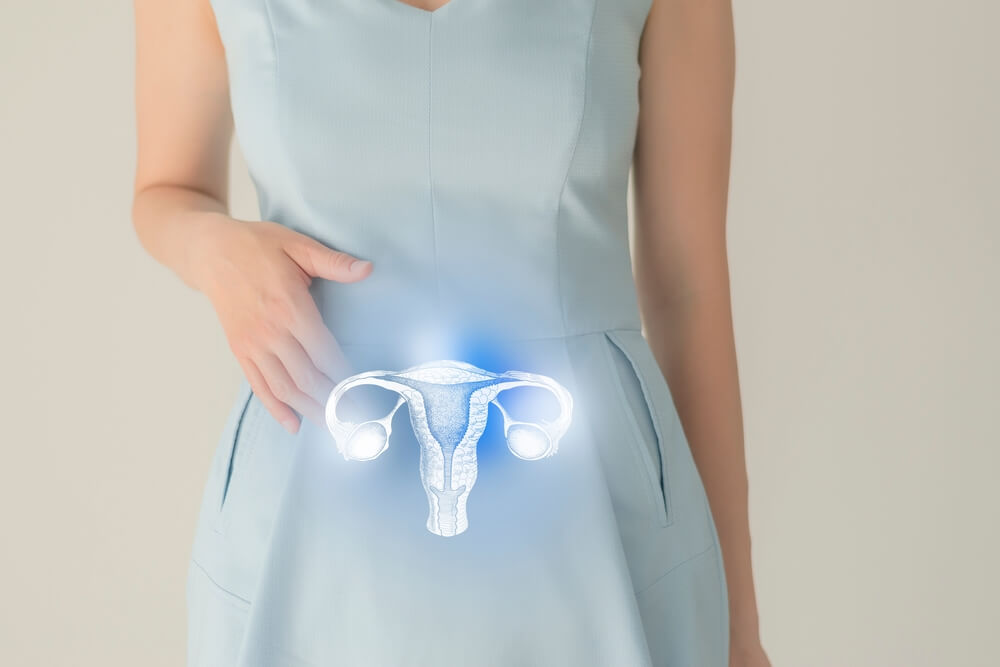An anteverted uterus or tilted uterus is a condition in which a woman’s uterus is tilted forward to the cervix. As you may know, the uterus plays a crucial role in a woman’s reproductive system.
In this article, your go-to experts on Women’s Health in Hialeah, FL, have gathered all the necessary info regarding an anteverted uterus, along with its differences when compared to the normal position of the uterus.
Also, we’ll discuss the topic of anteverted uterus pregnancy and whether it’s capable of causing risks for those who are planning to conceive.
The Normal Position of the Uterus
As you already know, the uterus can be best described as a pear-shaped organ that’s upside down, responsible for holding the fetus and the unborn child during pregnancy. Furthermore, the uterus also plays a crucial role in a woman’s menstrual cycle. Typically, the organ is located between the rectum and the bladder in the pelvic area, with some variation for each individual. When comparing the normal position of the uterus to the placement of an anteverted uterus, the latter means that the organ’s top part is aimed at the pubic bone and that the cervix is aimed near the rectum.
Usually, an anteverted uterus will be slightly behind and on top of the bladder and in front of the rectum.
Antverted Uterus: Is It a Risk?
Having a uterus in this position shouldn’t be a problem as it generally won’t cause any health issues. In fact, experts usually consider this a specific position. For the most part, women with anteverted uteri aren’t even aware of their uterine positioning until their healthcare provider tells them.
In some rare cases, an anteverted uterus may be classified as a severely tilted uterus that can put unnecessary pressure on the pelvis and may lead to menstrual pain and discomfort during intercourse.
How Common Is It?
As a matter of fact, having an anteverted uterus is quite common, with around 70% to 75% of women having a uterus in this position, meaning it can be considered “the normal position of the uterus.”
The size of the anteverted organ is usually about the size of a fist. The average size of the uterus is about three to four inches high and around two and a half inches wide, but the size and location (the anteverted nature of the uterus) aren’t related.
So, to make things clear, an anteverted uterus is considered absolutely normal, as the organ can tilt at a range of degrees. Antverted uteri usually tilt in the position of the cervix and point to the direction of the abdomen. For the most part, the position of the uterus is already established at birth in women, just as skin tone, facial shape, and other things you’re born with.
Things to Know About Anteverted Uterus Pregnancies
Fortunately, an anteverted uterus pregnancy is something that won’t be a problem for those who want to have children. The anteverted position of the uterus won’t lead to fertility issues. More often than not, if a couple faces difficulties conceiving and the woman has an anteverted uterus, the chances are pretty high that something else is causing the problem.
That said, here are some health conditions that may contribute to problems with fertility:
- PCOS or polycystic ovarian syndrome
- Uterine factor infertility
- Endometriosis
- Uterine fibroids
- Asherman’s syndrome
- Adenomyosis
Furthermore, having an anteverted uterus is considered safe for pregnancy, meaning that it won’t impact fetal development, labor, or delivery. The organ will be just as capable of growing to accommodate the developing baby as a “normal position uterus” and won’t carry any additional risks.

Symptoms and Causes
For the most part, the uterus in this position won’t cause any symptoms and won’t raise any health concerns. An anteverted uterus simply describes the location of the uterus within the pelvis.
Still, in some rare cases, the tilted uterus may cause pain during sex and menstruation and general discomfort in the pelvic area.
On the other hand, it’s also worth mentioning that some women have retroverted uteri, which are the opposite of anteverted organs. In the case of retroverted uteri, the uterus is tilted toward the rectum (or backward), and patients are more likely to experience symptoms such as pain during intercourse and back pain.
As mentioned before, women are usually born with the uterus in this position. Still, it’s not always the case. The uterus can shift and grow on its own so that the anteverted position may occur later in life as well.
That said, during pregnancy, a retroverted uterus can shift into an anteverted position near the second trimester and may remain in this position afterward. On the other hand, adhesions or scar tissue due to surgery and other conditions, like endometriosis, can make the uterus shift from a retroverted to an anteverted position.
Diagnosing an Anteverted Uterus
Generally, healthcare providers can diagnose an anteverted uterus with a simple pelvic exam. During the exam, your doctor will look and feel your reproductive organs, including your vagina, uterus, cervix, and ovaries. Also, providers can establish the exact position of your uterus with a transvaginal ultrasound.
Exploring Treatment Options and Prevention
Because it’s considered typical and safe, an anteverted uterus won’t require treatment.
Also, patients can’t really do anything to prevent the uterus from shifting positions, but they can minimize the risks of other uterine health complications. As such, women can:
- Practice safe sex and limit their number of sexual partners to minimize the risks of sexually transmitted diseases.
- Visit their gynecologist regularly for Pap tests and pelvic exams.
- Discuss any pain or discomfort in the abdomen, lower back, and pelvic region with their healthcare provider.
- Talk to the doctor in case they experience any changes in their monthly periods, including their length or the amount of bleeding.
Lastly, there are usually no health risks associated with having your uterus in this position as long as it’s healthy. Your best approach should be to continue seeing your gynecologist for regular pelvic exams and other gynecologic tests to assess the organ’s overall health.
Remember, there’s nothing specific about an anteverted uterus, so there’s no need for any fear and concern. Still, if you are experiencing heavy, irregular bleeding, pelvic pain, or telltale infection signs, contact your provider. These issues may be symptoms of a condition that requires medical attention.

Anteflexed Uterus vs. Anteverted Uterus
An anteflexed uterus is a forward-bending organ that generally has a more pronounced tilt than an anteverted uterus. The cervix’s direction is quite similar in both the cases of an anteverted and anteflexed uterus, but the latter will be more sharply bent or tilted toward the front. Such a tilted uterus can put additional pressure on your bladder and abdomen.
If You Want to Know More
As mentioned, an anteverted uterus is considered entirely normal; it just describes how it’s titled in your pelvis. It has no health risks and shouldn’t cause any pain. Still, if you have any questions or concerns about the condition, contact Carreras Medical Center to learn more and get some peace of mind.







